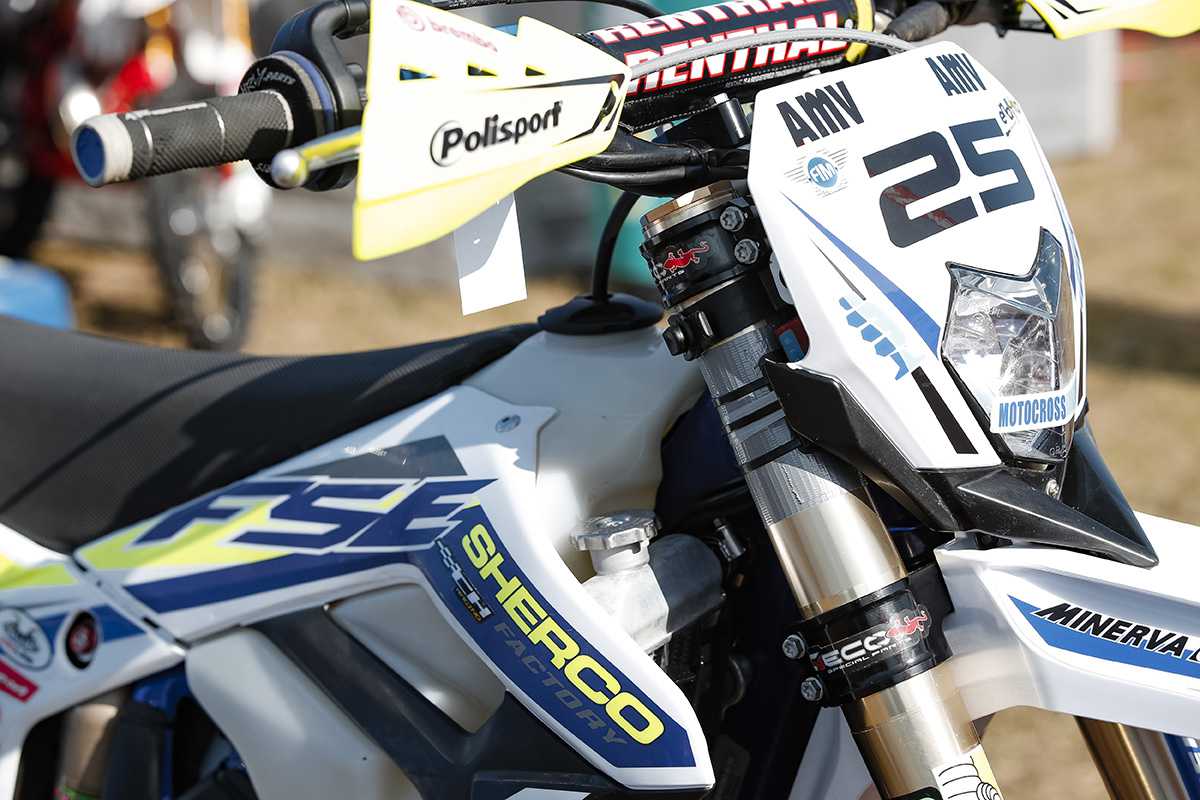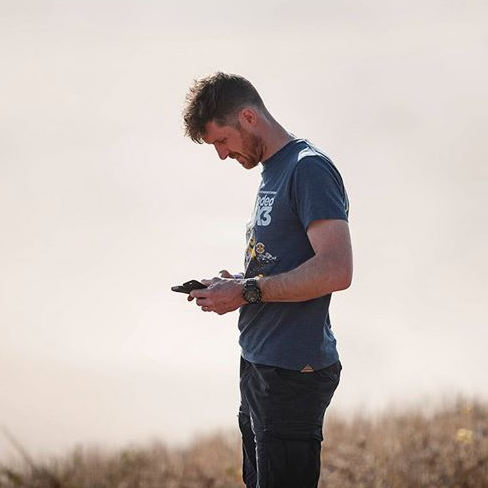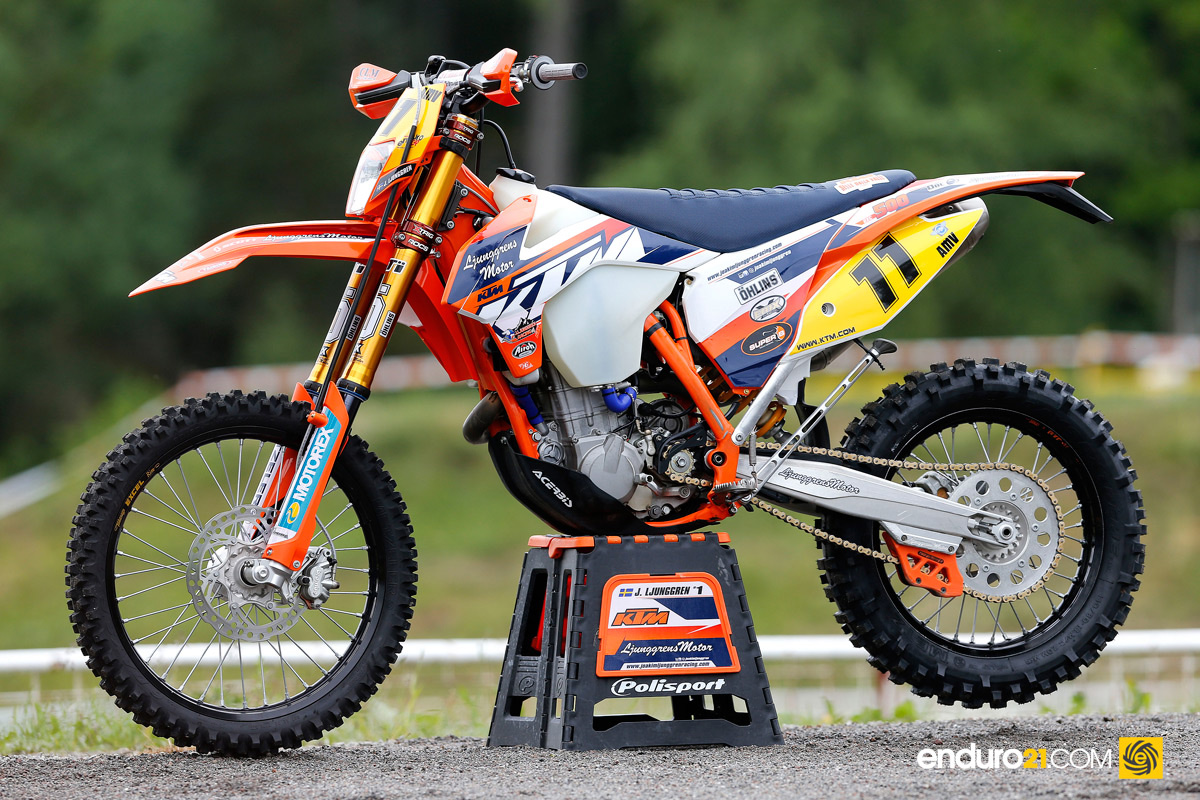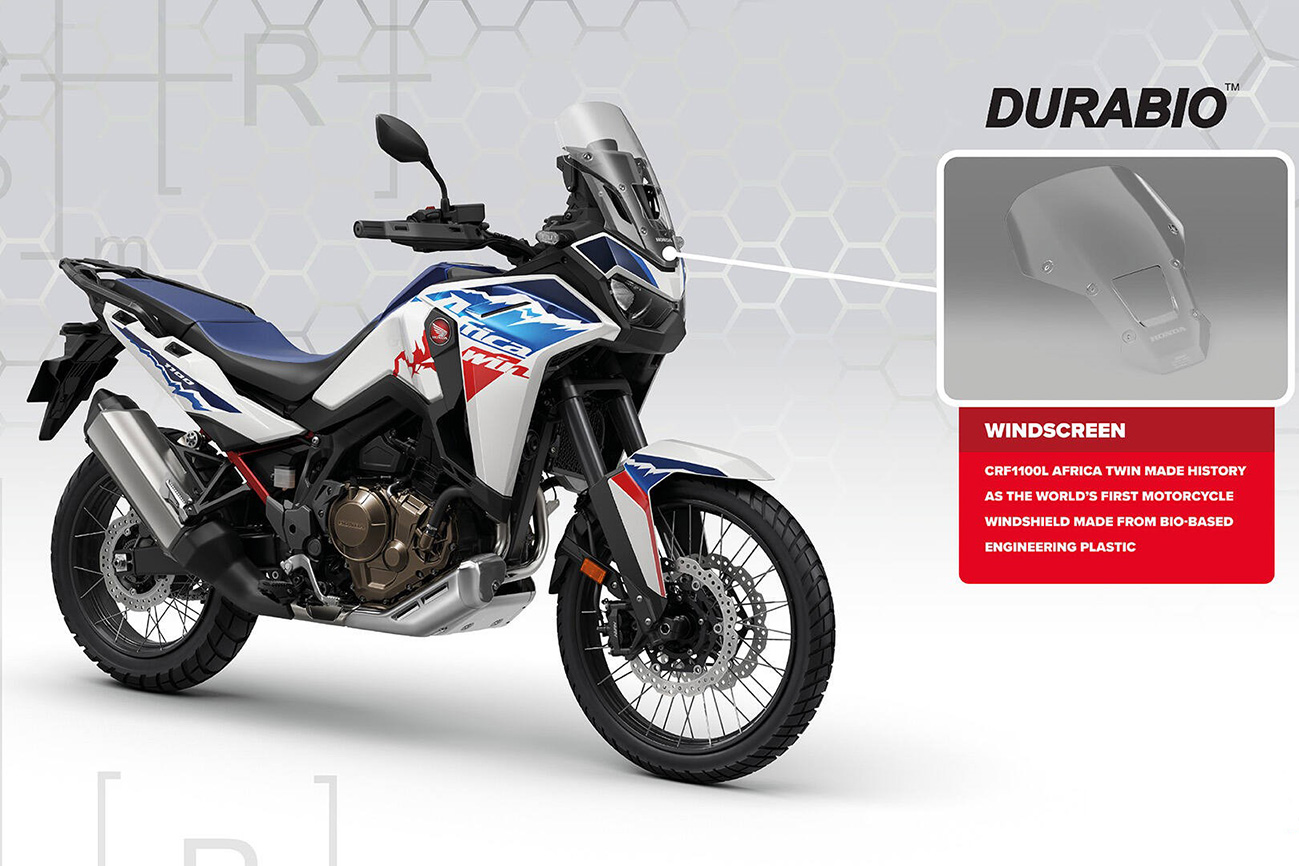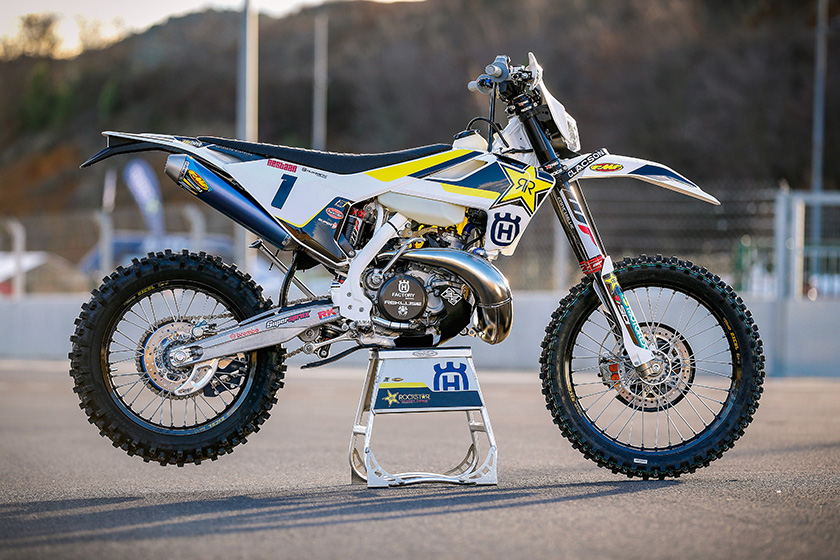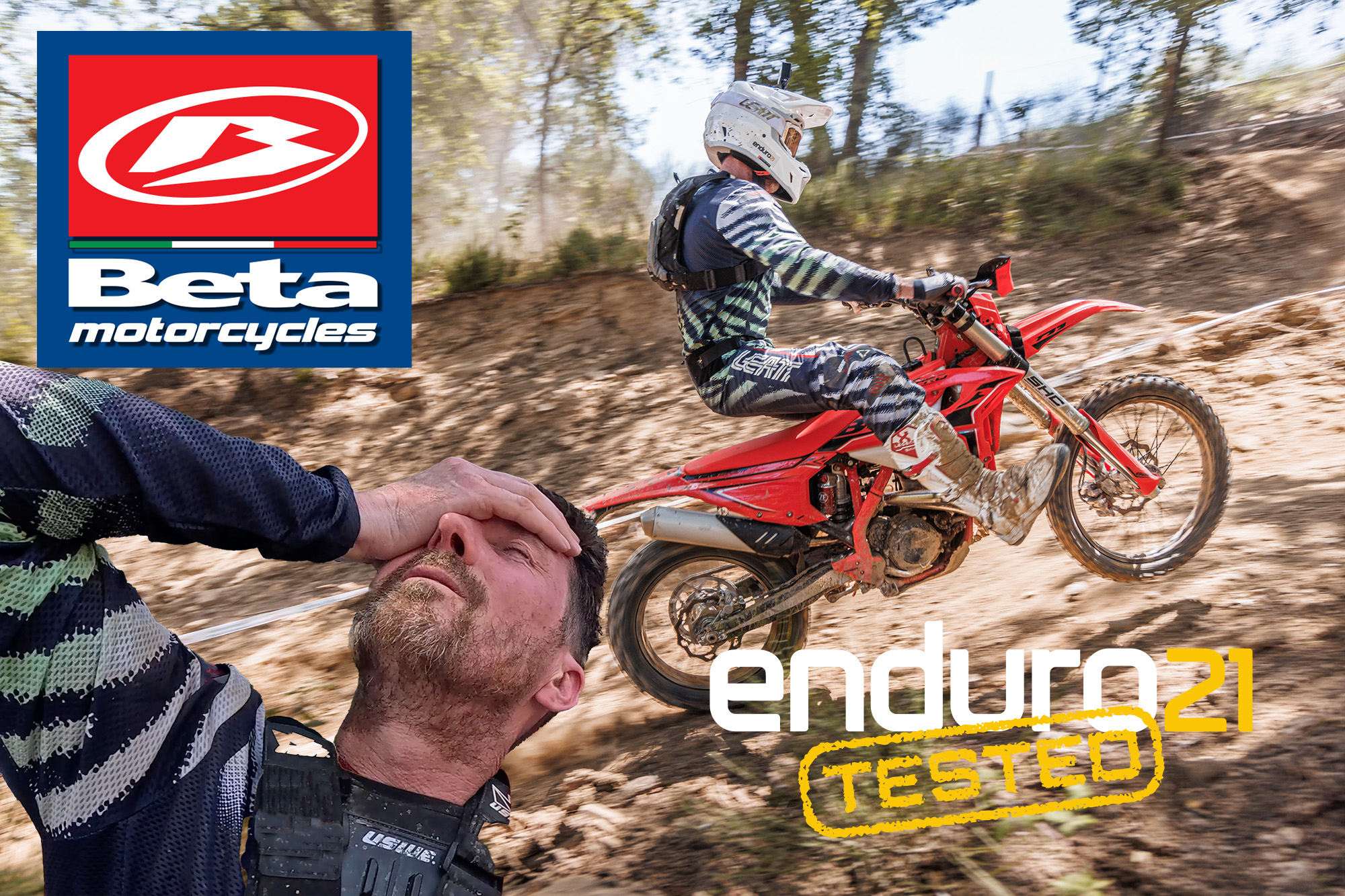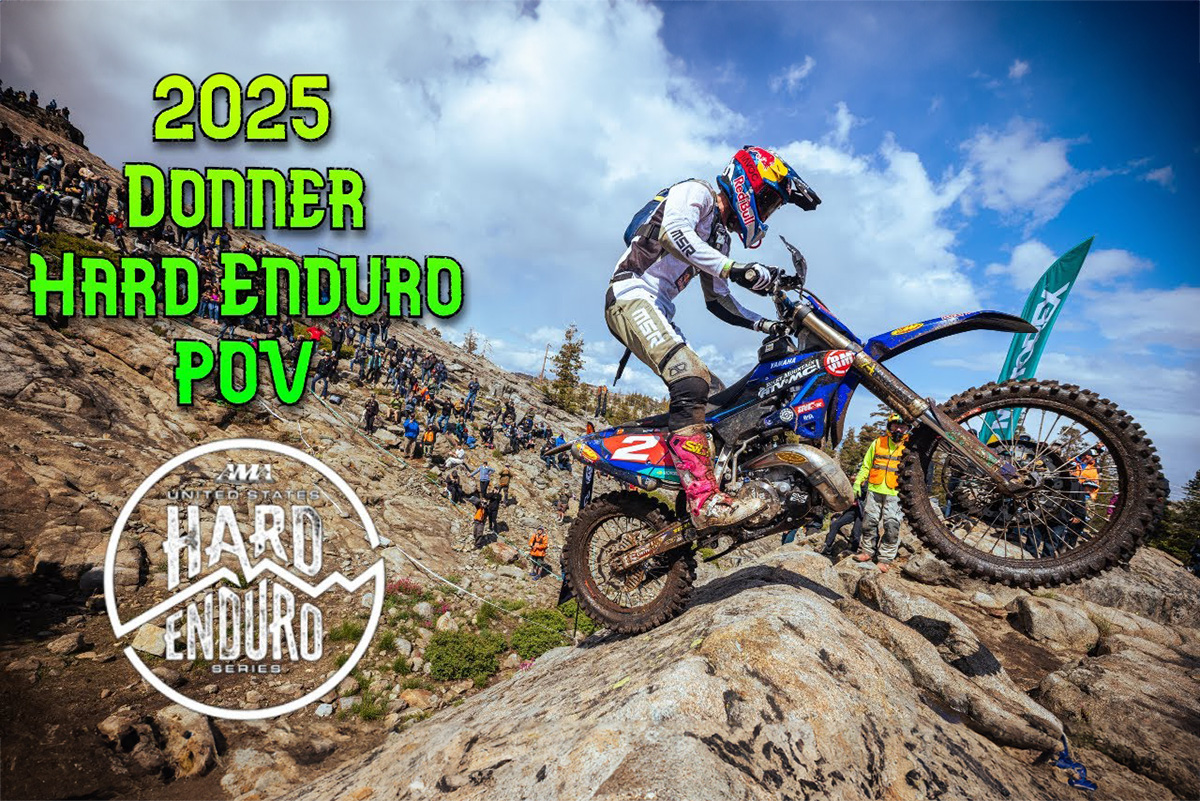Pro Bike: Matteo Cavallo’s Sherco Factory 250 SE-F
Taking a closer look at the Sherco 250 SE-F Factory race bike Matteo Cavallo has been putting on the podiums in the 2019 EnduroGP World Championship.
Fresh from the Junior World title in 2018, Matteo Cavallo made the jump up to the EnduroGP and E1 World Championship classes in 2019. It was a double jump for the young Italian having changed team and manufacturer to the Sherco Factory squad under the experienced hands of Fabrizio Azzalin and the CH Racing Team.
What a rookie season it is proving to be with eight E1 podiums including a win plus three overall podiums in a row through the Greek and Italian GPs.
Perhaps the most significant jump for Cavallo for 2019 though was the switch from 300cc two-stroke to 250 four stroke. In a GP world seemingly dominated by 300 two-strokes and 450 four strokes, Cavallo is surprisingly hitting the high notes and challenging for wins on Sherco’s baby four smoker.
Which is exactly why we’ve taken an Enduro21, ‘My Ride’ closer look at the details behind his Sherco 250 SE-F Factory weapon. Who says you need power to win races?
Go small or go home
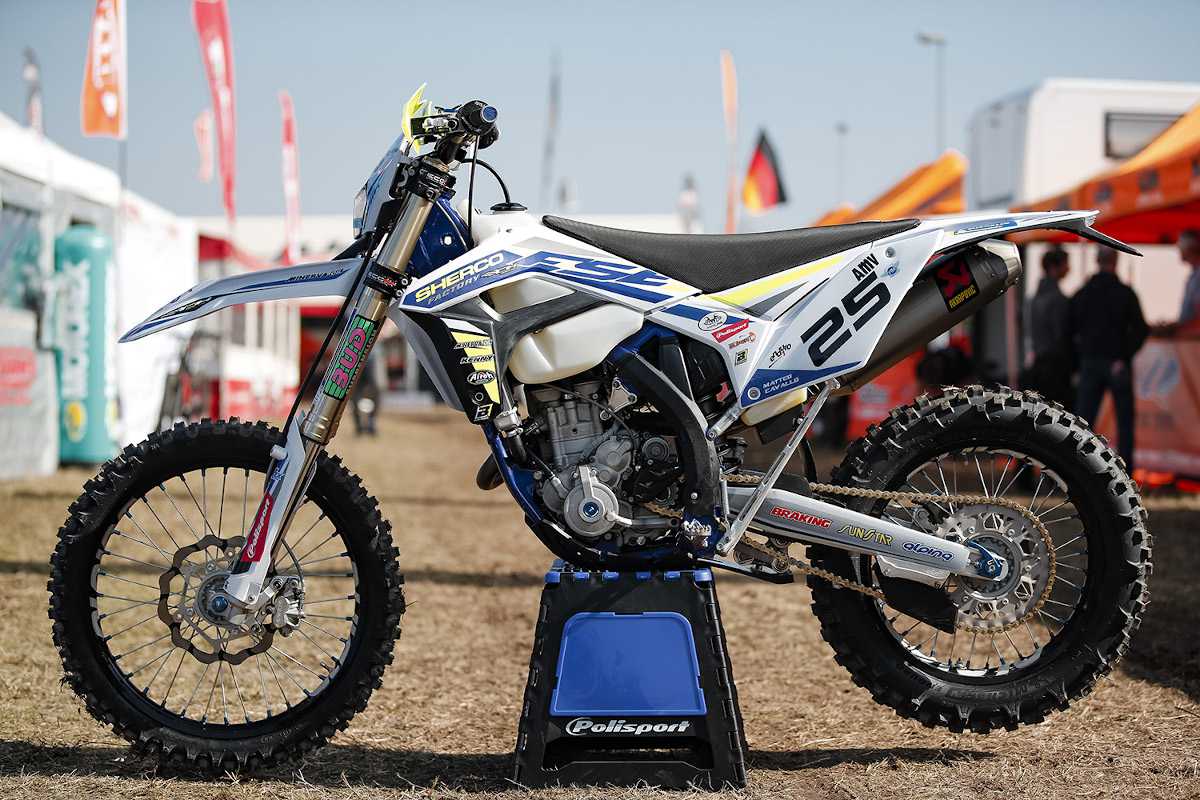
The first question we put to the team manager, Jordan Curvalle, and also to Matteo himself when we caught up at the Sherco 2020 model launch in Italy, was why race the little 250F?
Matteo Cavallo: “When I left the 300 two-stroke after so many years I decided to ride the 250 four stroke. My idea was always this from the start. I wanted to change completely the bike and for that reason I never tried any other bike. The only thing was a few laps on Matthew Phillip’s 300 SE-F but quickly I decided to ride this bike.” Fabrizio Azzalin’s CH Racing Team famously took Sherco to the World Enduro Championship title in 2016 with Matty Phillips.
“For sure it was hard to make the change to a 250 four stroke after three years on the 300 two-stroke – everything is different. But now I am finishing with some good results and importantly I feel really good on the bike.
“The nice thing about this bike is it is predictable. It is easy to know you can go really fast in a straight full of bumps for example and you know it will not kick you or do shit things.”
Stronger running gear
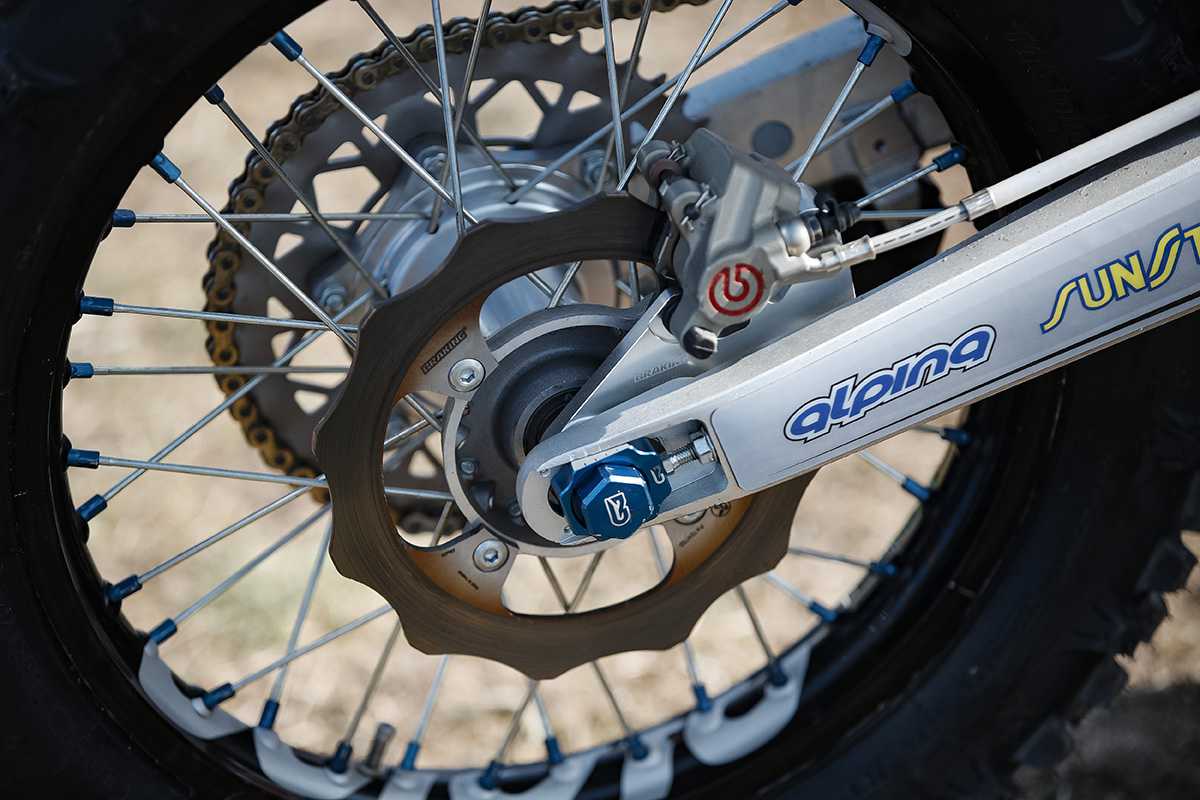
“A lot of the changes you can see on the bike is for strength and durability.” Explains Jordan Curvalle. The wheels, spokes and hubs, front and rear, are a good example and are supplied by Alpina replacing the standard parts with more durable or more practical kit.
“Some parts are different like the axle pullers and triple clamps from GeCo, which are of course stronger and make the steering more positive – the off-set is standard.” Adds Curvalle.
Brembo stopping power
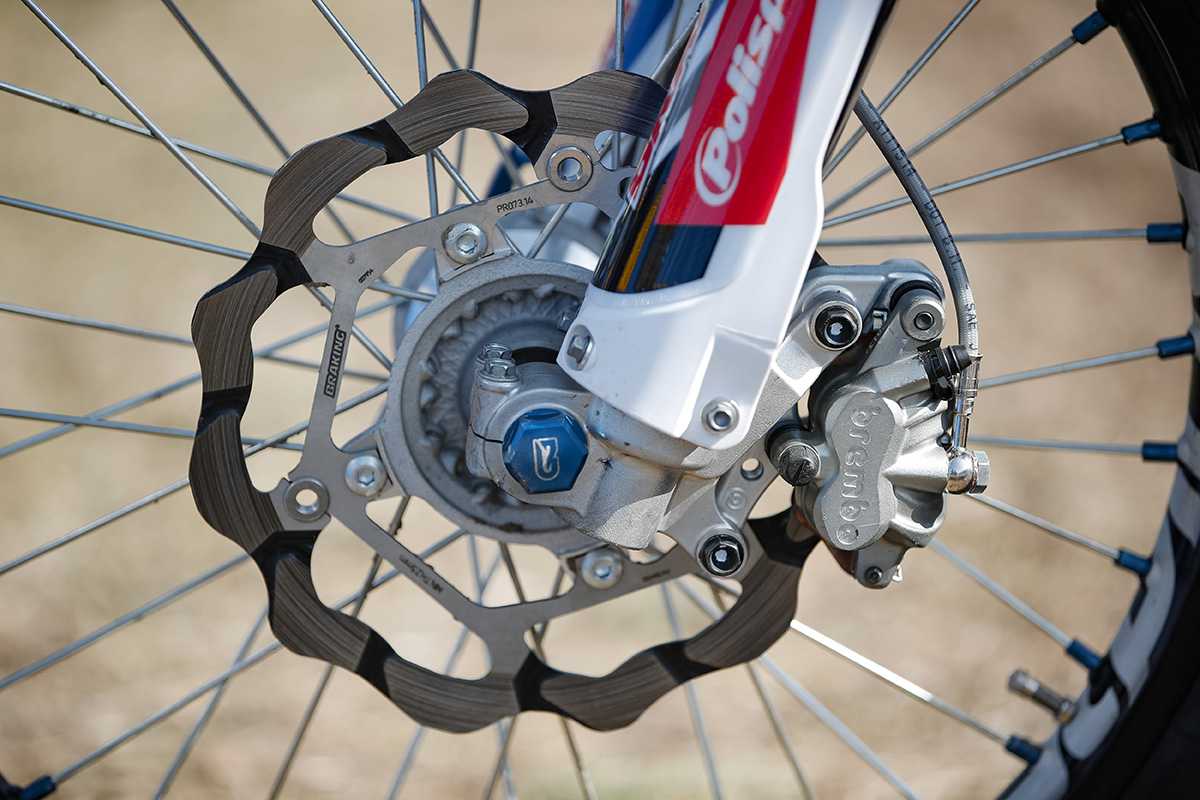
Taking a closer look at Cavallo’s braking set up reveals it is all about having more power and feel, just as you’d expect for a GP race bike. “We fit Brembo factory master cylinders and pads, front and rear, plus the front caliper.” Explains Curvalle.
Braking discs or rotors front and rear replace the stock parts. The rear is also a solid rotor and bigger, 240mm (220mm in standard bike). The front disc is also Braking part but same size as standard (260mm).
Curvalle explains there is no particular set up change, different lever feel with the front brake for example, just the factory Brembo products anyone could buy. Only the clutch master cylinder is standard part at the hand controls.
High and flat Renthals, low clamps
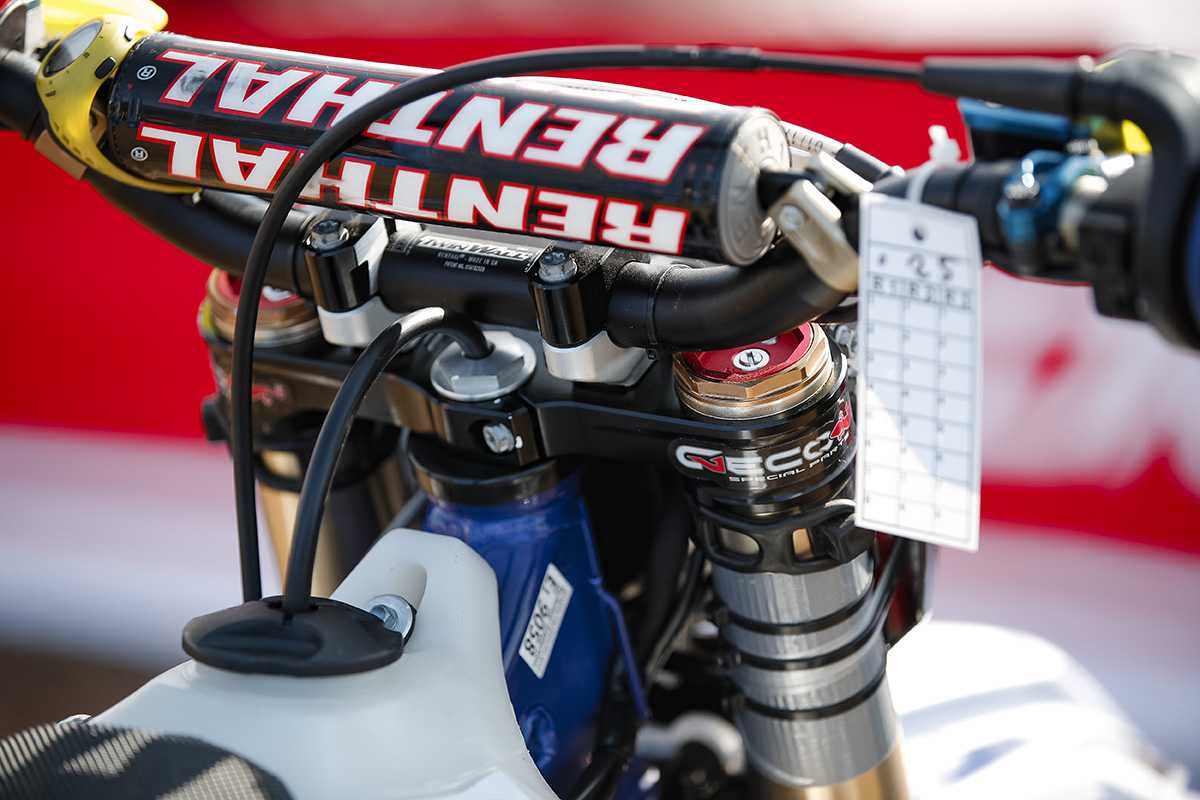
Cavallo uses a Renthal 994 handlebars, “the highest and straightest handlebar Renthal make.” Says Curvalle.
“I like the flat bar and the bit of height there especially for the extreme riding conditions because it helps to pull and to push.” Adds Matteo. “I also have them bars set back on the clamps, the clamps are turned back.”
Set-up fixed for the season
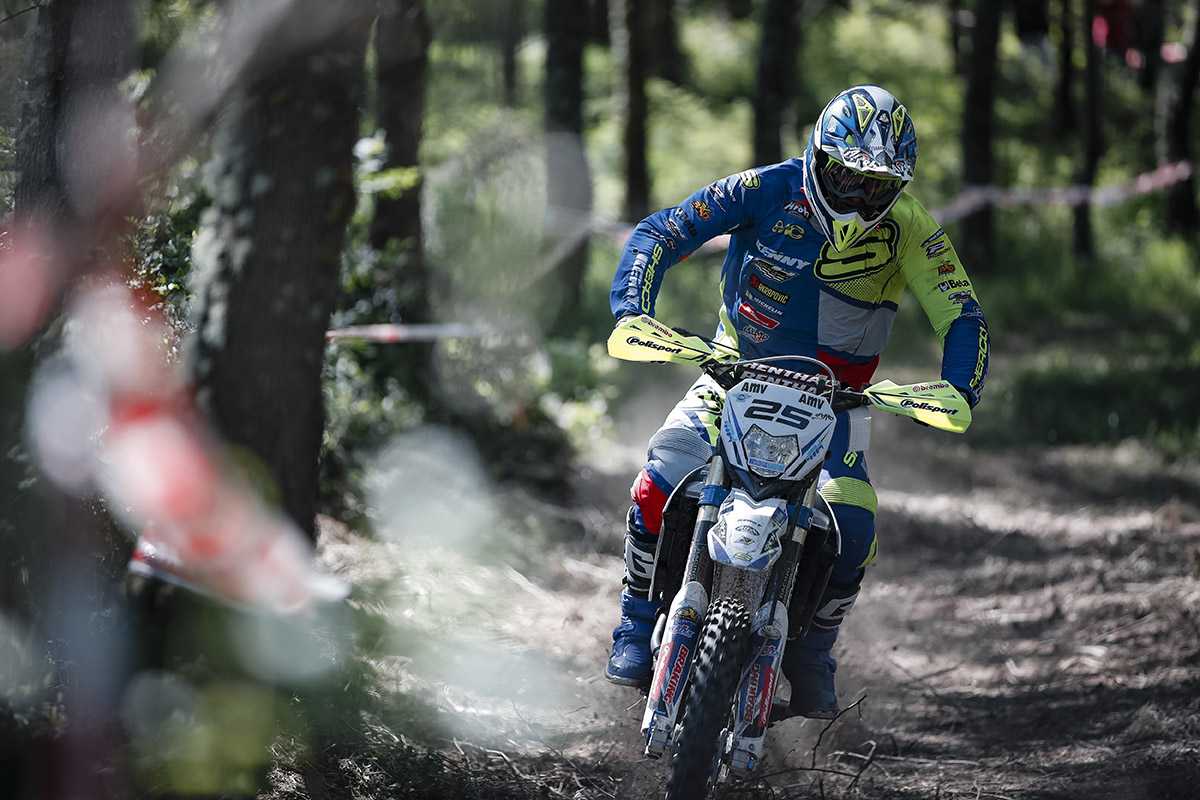
“Over the season the main thing that changes for me is how hard I can push.” Says Cavallo. “At the start of testing in the winter. I rode quite well but I struggled to feel the limit. So sometimes we would go out to test and I was thinking I was riding well but the times showed it is different.
“Now, I feel I have improved to always feel the limit and always be able to push to the maximum. This is necessary because, for example, when you arrive at the end of a straight to make the maximum possible braking point for the turn, you must know the limit.”
Sweet chassis bringing confidence at speed
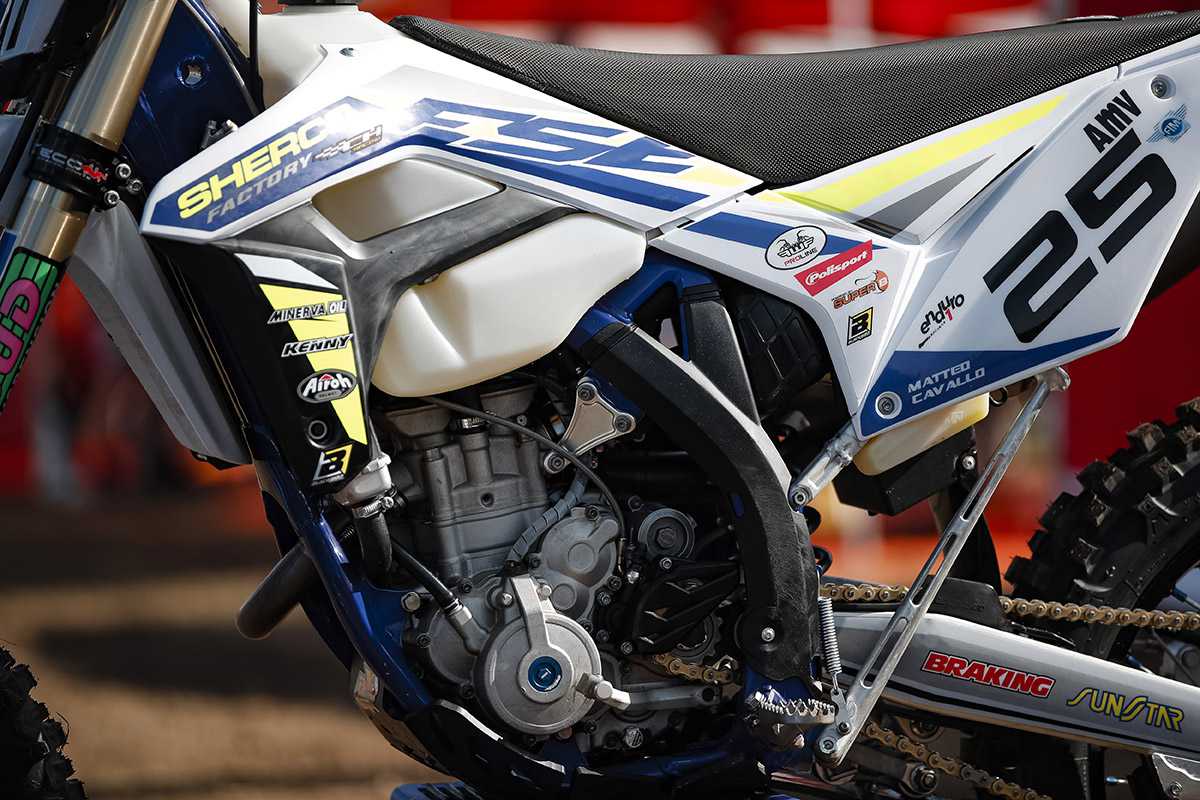
The Sherco frame is standard with no changes except for a tweak to the rear subframe you’d be hard-pushed to spot. It is a hand-made change to position, “the back of the seat one centimetre lower.” Explains Matteo. “It is all to help me be further back on the bike overall than you ride the standard bike. Also the foot peg is further back (5mm) than standard for the same reason.”
Make it harder to hit things harder

The suspension is the standard Kayaba kit bolted in to the standard Factory Edition Sherco range but with a specific set up for Matteo with help from suspension specialists, Bud Racing.
“Matteo likes his suspension to be really hard,” says team manager, Jordan. “If we compared it to Theo’s (Espinasse), Jeremy’s (Tarroux) or Jack’s (Edmondson) bikes, his suspension is harder because of the way he rides.”
“I use a 5.4 spring in the rear 4.6 in the front which is way more hard than standard.” Matteo explains. “I also like my fork to sit higher,” adds Matteo. “Every standard bike for example is set to the second ring on the fork top but I set mine the first. It responds better for me in situations when you are riding as fast as you can.”
As for any set up changes during races or across different riding conditions, Matteo says it basically stays put after off-season testing: “We made some adjustments but only during the first testing. Once we found the solution I don’t make any changes for all the GP races.
“If I find something within a race I would like to change then after the GP we go to test it and maybe make a change but more or less we stay the same from the pre-season setting.”
Engine fine tuning

“We do some work on it but basically the engine is pretty standard with air intake, airbox and flywheel all stock.” Curvalle tells us.
“The only thing we do is some work on the cylinder head to make the power stronger and higher. We also use a special mapping set-up of course for this engine and exhaust – Theo, Matteo and Jeremy use the same map.”
Cavallo’s bike has the map switch from the standard SE-F model on the handlebars so he could choose between hard and soft maps but, “honestly Matteo always uses the hard one” says Curvalle.
Bolt-ons you can buy

Cavallo’s 250 SE-F Factory also runs a list of bolt-on extras but there is very little here you could not buy for yourself from your local dealer.
The stand-out part is the exhaust system but this is the same Akrapovic parts used in the Factory 250 SE-F Sherco.
Non-stock parts include the bigger skid plate from AXP Racing with the suspension linkage protector. A Funnel Web air filter is slotted inside the airbox helping performance also.
The Blackbird Racing seat is higher than standard but Matteo has his mechanic cut and shape the foam inside to suit him: “The standard high seat is too high for me and also it is too much like a mountain, I prefer it to be more flat so my mechanic cuts the profile down for me.” Says Cavallo.
The Sherco Factory team run Sunstar front and rear sprockets with 13-50 gearing fitted to Cavallo’s bike – the standard bike is 13-49. One of the few changes Matteo might make during a race weekend is to use 50 or 51 rear sprocket depending on the race.
That’s it. A Factory Sherco for GP racing and a 250 four stroke fit to battle for podiums with the big boys.
Sherco has a seven-strong enduro range in which the 250 SE-F sits at one end and a long from the 450 4T and 300 2T models you might expect to be the bikes of choice at GP level. The focus for Sherco overall is slanted towards the smaller capacity classes with strong contingent in the Youth and Juniors. Cavallo’s machine proves they can also build a competitive bike to challenge at the higher levels.
Photo Credit: Future7Media/Andrea Belluschi





